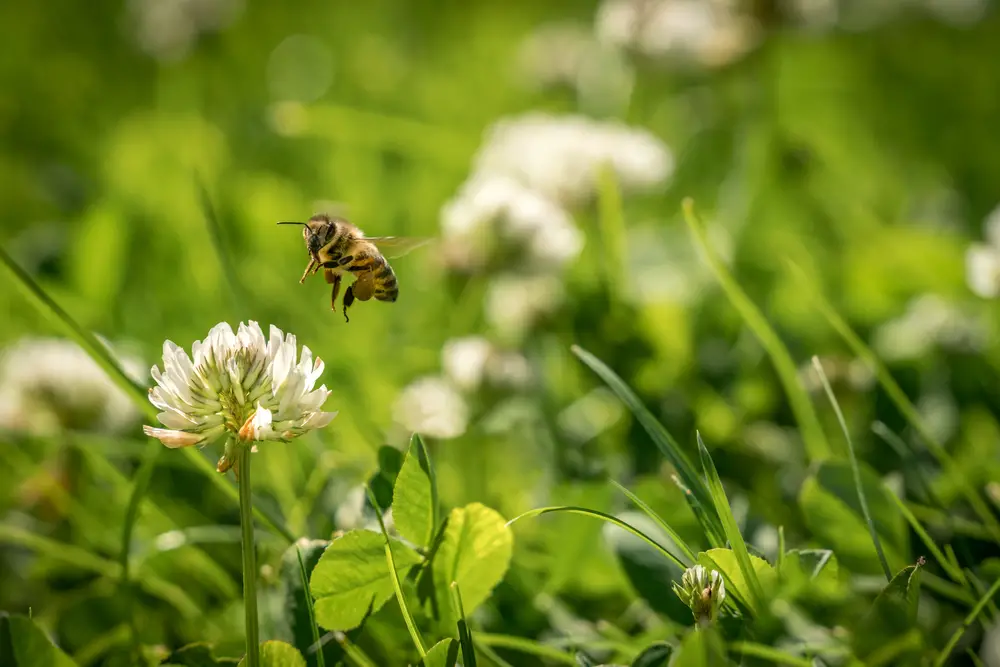I have been a lover of bees for many years now. During this time, I’ve done a lot of research on why these little critters are essential. One of the things that really stood out to me was how I could do my bit to help bees by creating a bee-friendly garden. So, what is a bee-friendly garden? And why should you consider one?
A bee-friendly garden is an outdoor space optimized for use by various species of bees. It might include native plants for collecting pollen and nectar, a water source, and nesting spots. Having one helps bees, plants, and by consequence, us too.
What Is A Bee-Friendly Garden?
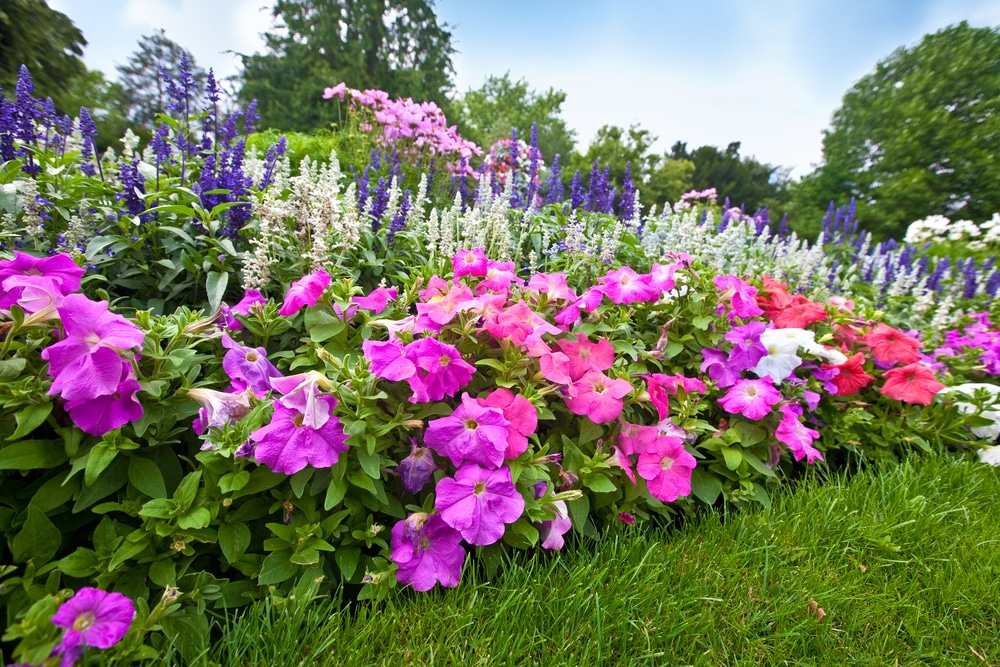
You’ve probably heard a lot of talk about bee-friendly gardens in recent years. That’s because more and more people are becoming aware of the importance of bees and are keen to lend them a helping hand.
One of the ways you can do this is by creating a bee-friendly garden, and it’s easier than you might think.
A bee-friendly garden has everything a bee would need: places to take shelter and nest, food sources, water, and protection from danger.
If you’re thinking about creating a bee-friendly garden, you’ll need to fill it with native flowering plants. These are much more attractive to bees than exotic species.
Why Is It Important To Attract Bees To Your Garden?
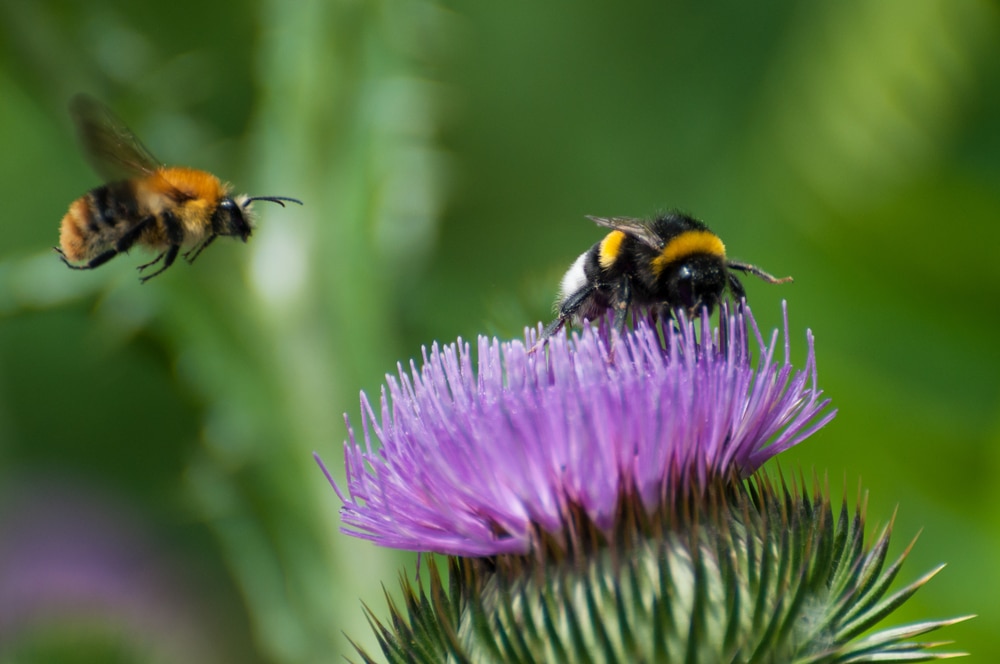
I’ve spoken to many people that seemingly take bees for granted. I don’t think they do this intentionally, but many see them as random, sometimes annoying insects. But when you look a little closer, you’ll see that bees really do play an important role.
Bees are pollinators, which means they take pollen from one plant and deposit it on another, enabling plant reproduction. How does this affect you, you might wonder? Well, 75% of your food results from animal (including bee) pollination.
Not only this but bees are an indicator species. This means scientists use bee populations to determine the ecosystem’s overall health. They’re sensitive to changes in the environment, so where there aren’t a lot of bees, this tells us there may be some environmental problems.
Similarly, conservationists can rest assured that the environment and ecosystem are thriving where bees are abundant.
However, since bees face many threats like habitat loss and pesticides, it’s down to every individual to ensure they have a safe space. That’s why it’s essential to attract bees to your garden and give them everything they need.
On top of that, you also benefit. Your winged visitors will help pollinate any plants you’re growing in your garden. Plus, there’s nothing more satisfying than watching these amazing creatures right on your own back doorstep.
How Easy Is It To Make A Bee-Friendly Garden?
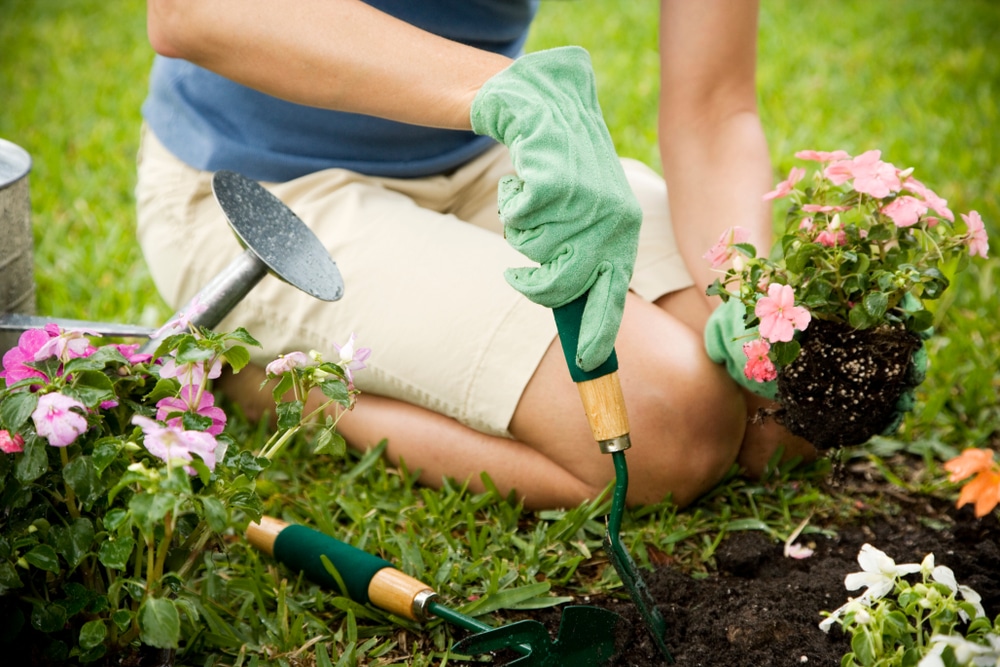
Making a bee-friendly garden is straightforward if you have an outdoor space. In most cases, you won’t need to make all that many changes, and even a few changes can make a big difference.
For example, planting a few native plants is a great way to attract bee visitors. I recommend cutting the use of pesticides in your garden and replacing them with organic treatments (more on that later!
One of the things I always tell people when creating a bee-friendly garden is to add a water source. This often causes people to believe that setting up the bee garden will be difficult as they imagine a large pond or something similar.
In truth, your water source could be as simple as a strategically placed bowl of water with some rocks for the bees to land on. Making your bee-friendly garden doesn’t need to be a huge undertaking.
Can You Have A Bee-Friendly Garden And A Regular Garden?

Yes! If you’re short on space or don’t want to dedicate your entire yard to bees, then creating a bee-friendly area is possible.
I’ve done this in my own garden, and it’s worked wonders because I’ve noticed many more bees coming to visit.
You’ll need to apply the same techniques, such as adding native plants, creating nesting sites, and providing a water source, just on a smaller scale.
In my garden, I’ve allowed a grass strip (around 10 ft x 3 ft or 3.05 m x 0.91 m) along one fence to grow wild. This creates shelter and nesting spots for ground bees. You might think this would look messy, but it looks beautiful and gives my garden a woodland feel. However, I recommend checking local laws, as some areas stipulate how long you can let your grass grow.
I’ve also added a medium-sized water bowl and purchased some wildflower seed packets, which have bloomed nicely. The rest of the garden is left for me, but I have the satisfaction of knowing the bees have somewhere to hang out.
With all this in mind, I recommend completely eliminating chemicals like herbicides and pesticides in your garden.
If you’re creating a small bee area, these insects can still access other parts of the garden, and if they come into contact with chemicals, this is hugely detrimental.
Why You Should Consider A Bee-Friendly Garden
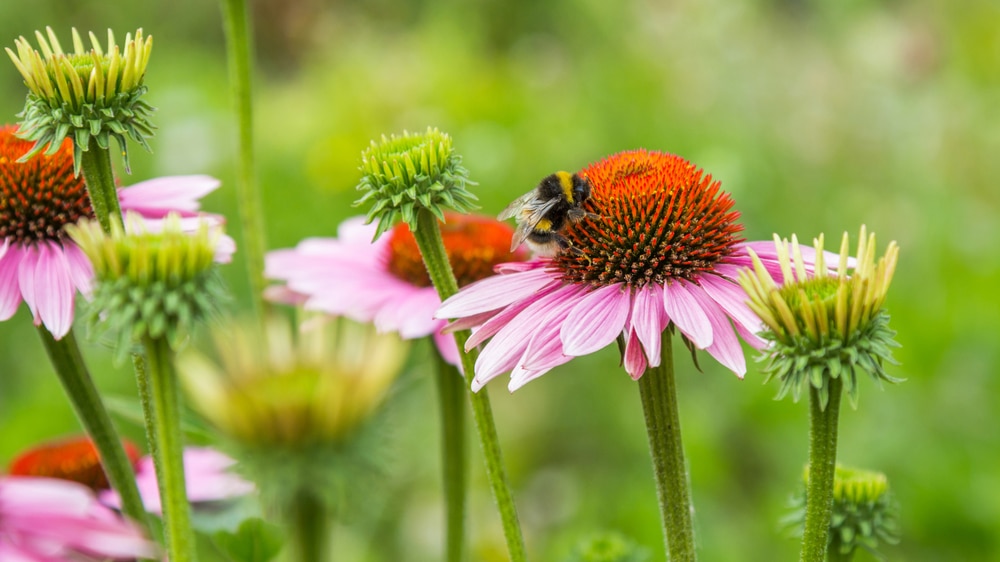
Giving your garden a bee-friendly overhaul might seem daunting, but it doesn’t have to be complicated. If you’re still on the fence, let me explain why a bee-friendly garden is a good idea.
Help Protect Local Bee Populations
As I mentioned earlier, bees are essential to the ecosystem and pollinate human crops. This has a direct impact on the economy in terms of agricultural jobs and for beekeepers who loan hives to farmers.
But bees cannot do their work if they don’t have the right resources, so we must protect them and provide them with the things they need.
There’s a real sense of accomplishment when you create a bee-friendly garden, knowing you’re doing your bit to protect these wonderful creatures.
Encourage Pollination
Do you grow flowering plants or maybe fruits and veggies in your garden? If you do, then you’ll know that pollination is essential.
A small handful of plants are self-pollinating, and others rely on the wind or water to transfer pollen. But around 80% of all plants are pollinated by honey bees.
Having bees come to your garden means that they’ll provide a helping hand to whatever you’re growing through the process of pollination. You’ll notice that your plants grow healthier and more robust. More importantly, it’s been shown that bees can increase crop yield by as much as 20% purely through pollination.
Observe Nature On Your Back Doorstep
I don’t know about you, but I love to be able to watch nature; I’m always on the lookout for wildlife. Just yesterday, I was standing in a car park surrounded by trees and shrubs. To my delight, a beautiful small tortoiseshell butterfly landed on a patch of grass right next to where I was standing.
While it’s great to see nature when you’re out and about, there’s nothing more satisfying than observing it right in your own backyard.
Bees are incredible insects and an absolute joy to watch. With a bee-friendly garden, you’ll have lots of winged visitors, and if you sit quietly, they’ll go about their business, and you’ll get an insight into their lives.
Tips On Creating A Bee-Friendly Garden
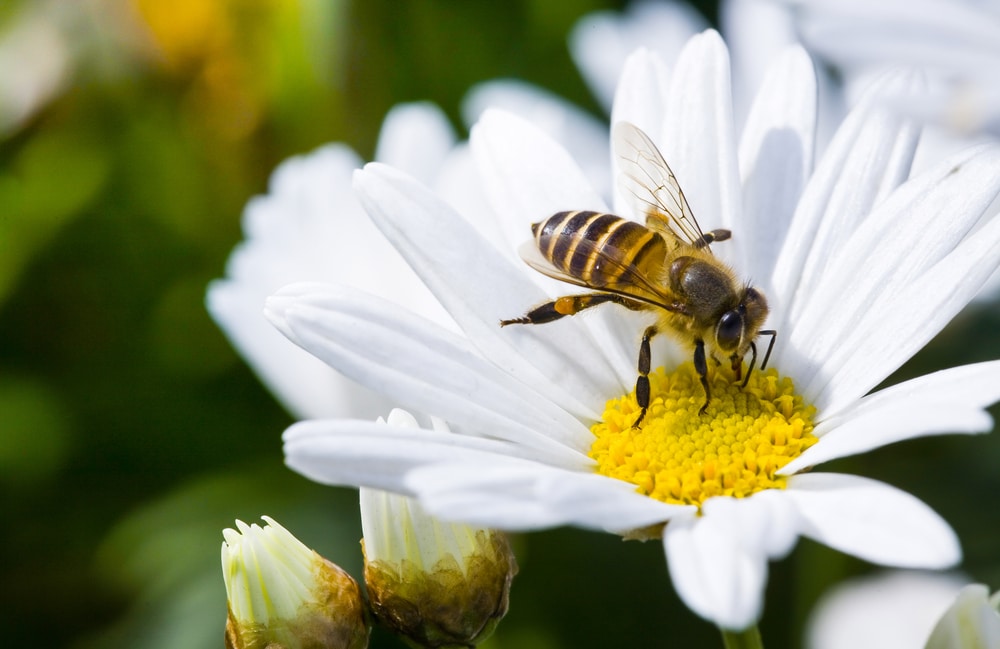
Hopefully, you’re ready to make a bee-friendly garden. If so, here are some ideas for getting started.
Let’s begin with planting native plants.
Plant Native Plants
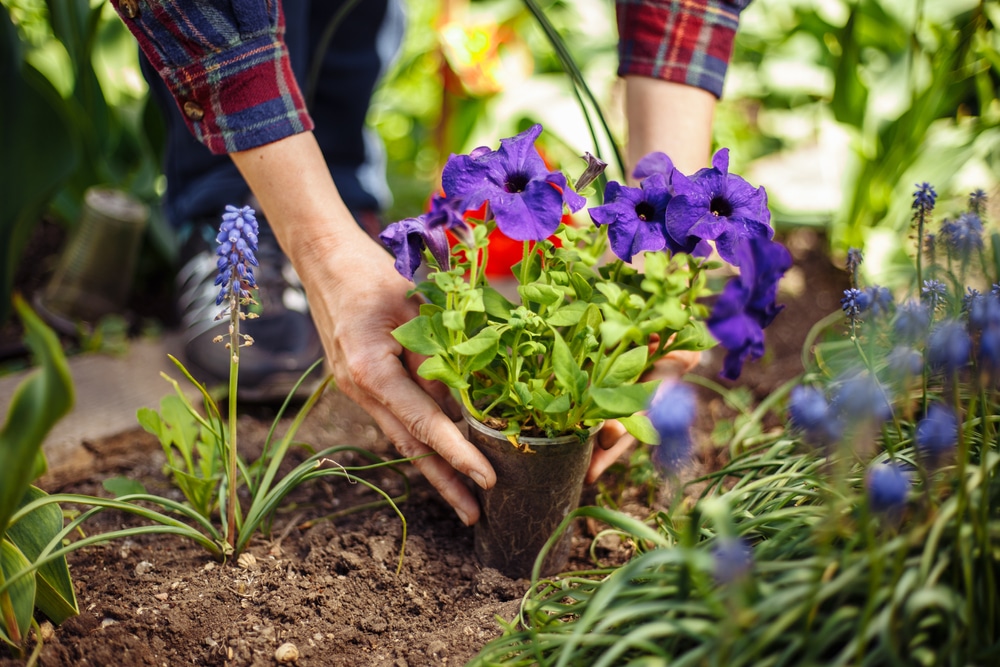
Studies have shown that bees (and other pollinators) prefer native plant species. The term native plants simply refers to local plants as opposed to exotic species brought in from elsewhere.
While exotic plants look great (and there’s nothing wrong with having them in your garden as long as they’re approved), they aren’t going to thrive as well as native species. That’s because native plants in their natural climate have everything they need to grow big and strong.
Because of this, these plants will produce larger, healthier flowers bees love to feed on.
Offer A Water Source
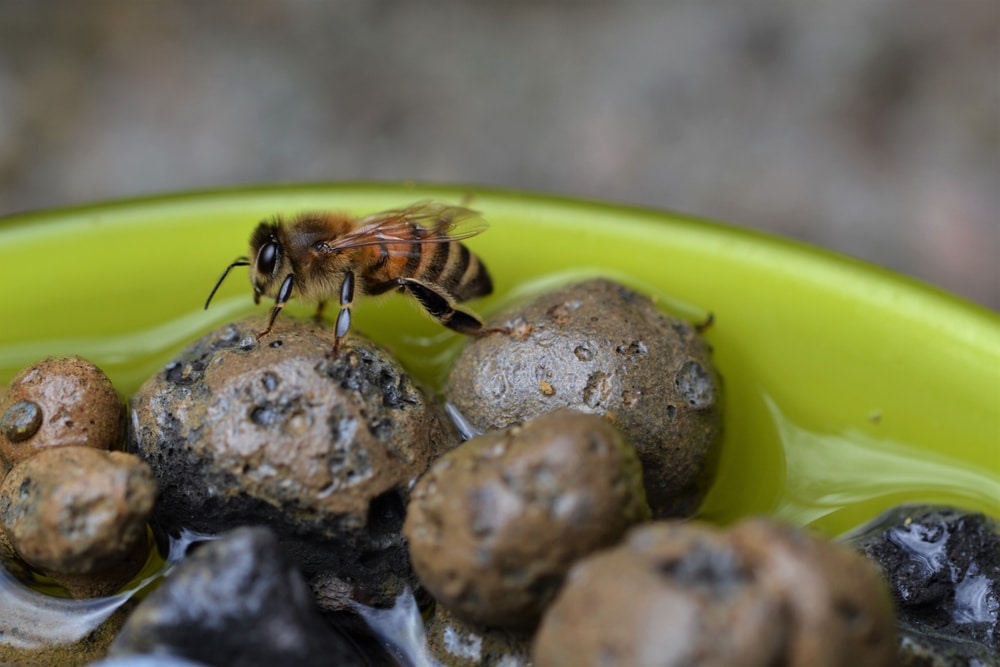
Bees need water just like we do. They drink it, and honey bees also use it to control the temperature within their hive.
This is why every bee-friendly garden should have some sort of water source, but it doesn’t need to be anything fancy.
If you can install a wildlife pond or prominent water feature, then that’s great. But I realize this can be expensive and take up a lot of space. Plus, you’ll have to make it safe for bees to use with stable surfaces for them to land on.
Instead, you can use something as simple as a container of water placed in a sunny spot. Adding some rocks or something similar that the bees can land on is essential. They are not very good swimmers, so also ensure that the water is shallow.
Cut Out Garden Chemicals
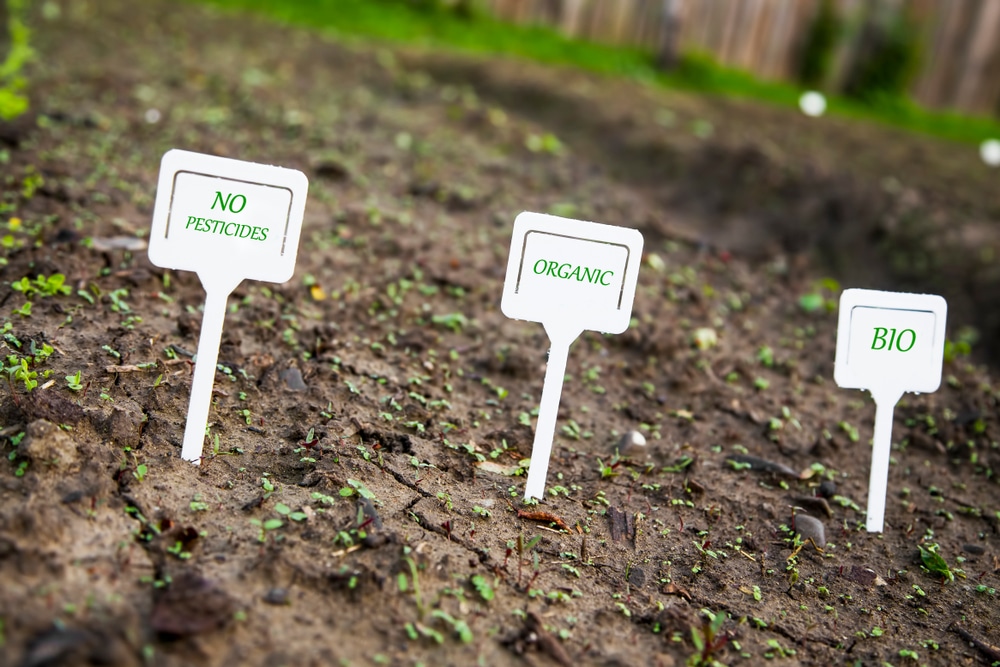
With so many organic options for pest control and plant growth, there’s no need to use chemicals in your garden.
But when creating a bee-friendly garden, this is one of the most crucial things to consider.
Researchers have proven pesticides affect bee health in several ways. For starters, pesticides can damage bee larvae’s memory and learning ability. Furthermore, bees’ reproductive systems can suffer damage from exposure to these chemicals. Since these creatures are already under threat, the last thing we want is to impair their ability to reproduce.
What To Use Instead
Here are some things to try other than pesticides:
Crushed Eggshells
Use crushed eggshells to deter ground pests like slugs and snails. Sprinkle them around your plants. This will create a very uncomfortable terrain for these creatures, which will quickly go elsewhere.
Introduce Natural Predators
Try introducing natural predators to your yard to control aphid populations (insects that take plant nutrients). Things like lacewings and ladybugs are ideal. In fact, a single ladybug can consume more than 50 aphids in a day!
Use Water
Water can be a lifesaver when removing pests from your plants. Simply take your hose on a gentle setting and spray those bugs away.
Remove Them By Hand
If you have time, it is possible to hand-pick pests from your plants. Just remember to put gloves on first.
Make A Homemade Insecticide
Using a homemade insecticide, you can deal with thrips, aphids, mites, and scale bugs. Simply put one tablespoon (tbsp) of dish soap into a cup of vegetable oil, then take eight teaspoons (tsp) of this mixture and add it to two quarts of water. Spray onto your plants, and those bugs will be gone.
Create Nesting Spots
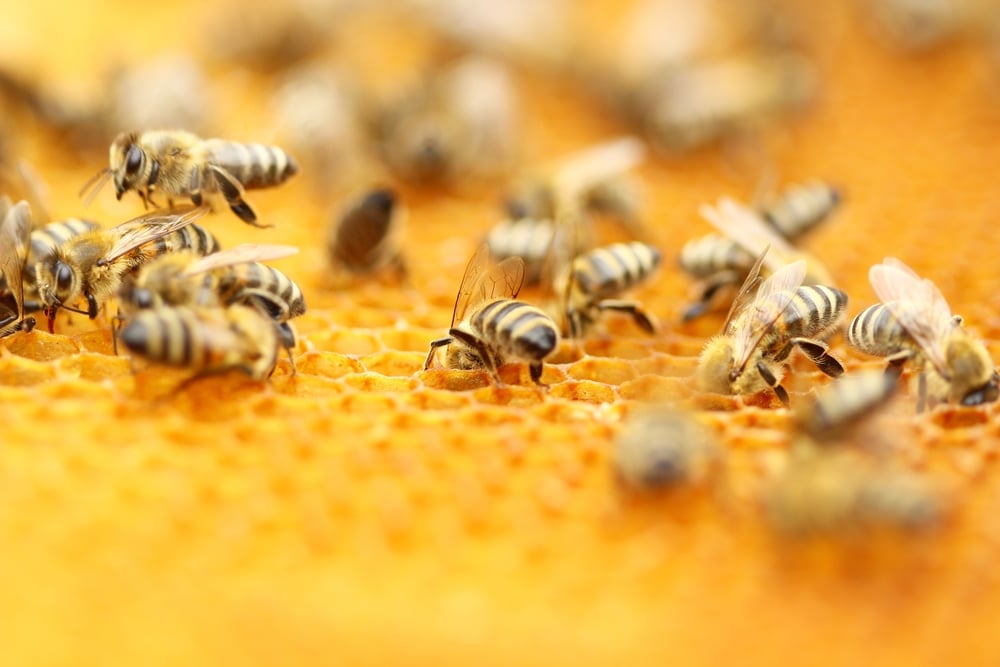
Different bee species require different types of nests. Carpenter bees like to nest in wood cavities, while bumble bees nest in holes in the ground. Honey bees need a hive, so if you fancy a new hobby, then getting a beehive is a great way to protect these precious pollinators.
However, for most people, becoming an apiarist (beekeeper) isn’t a viable option, but you can still do other things to create nesting spots and shelter for bees:
- Have a log pile in a quiet corner of your garden
- Allow a portion of your lawn to grow longer
- Buy an insect hotel (some are specifically designed for bees)
- For ground bees, leave some patches of bare soil
Offer Alternative Food Sources
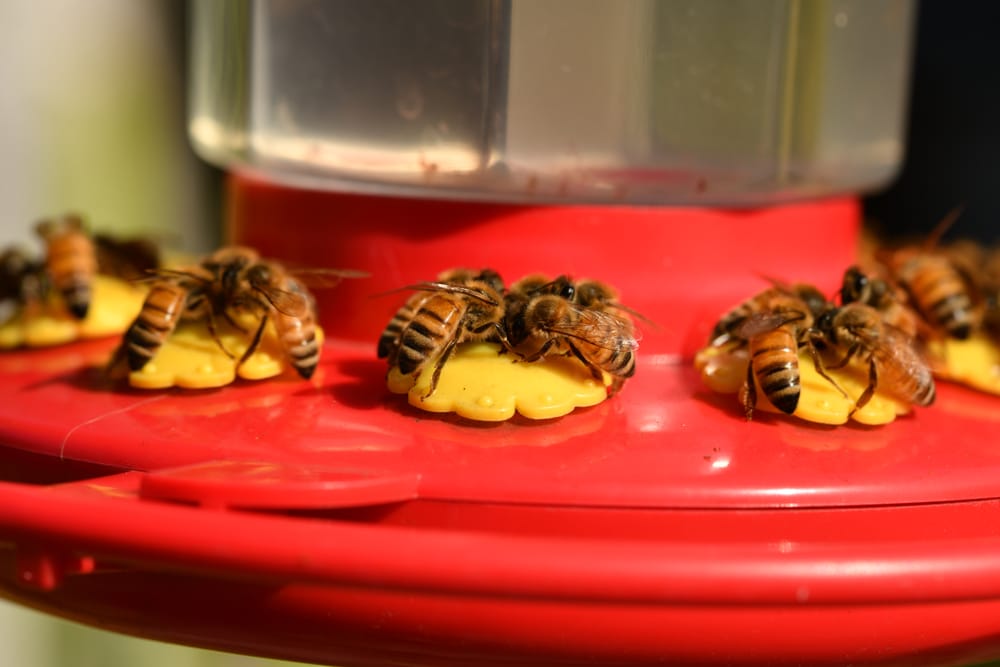
While nectar and pollen from native plants are the best food sources for bees, they may not always be available.
There may be seasons where your flowers don’t bloom as well, and in some cases, bees may emerge early from hibernation in spring. There will be far fewer flowering plants in bloom then, so providing an alternative food source is essential.
You can do this by making your own sugar syrup, which is an excellent alternative to nectar and provides bees with all the energy they need.
It’s easy to make using a 1:1 ratio of water and sugar. Heat the water to allow the sugar to dissolve, and then place the mixture in an open container to give the bees easy access.
Worried About Having Bees In Your Garden? Don’t Be!
A lot of you reading this may have concerns about inviting bees into your garden because of their ability to sting.
Not all bee species have stingers, though. What’s more, with most species, such as honey bees and sweat bees, only the females can sting.
But there’s no need to worry, as all but one bee species (the Africanized honey bee) are incredibly docile. The only time they’ll resort to stinging is if they feel threatened. They won’t bother you if they’re in your garden enjoying your plants.
That said, there are some things you should avoid doing, such as leaving food uncovered and wearing heavily scented floral cosmetics if you want the bees to stay out of your personal space.

